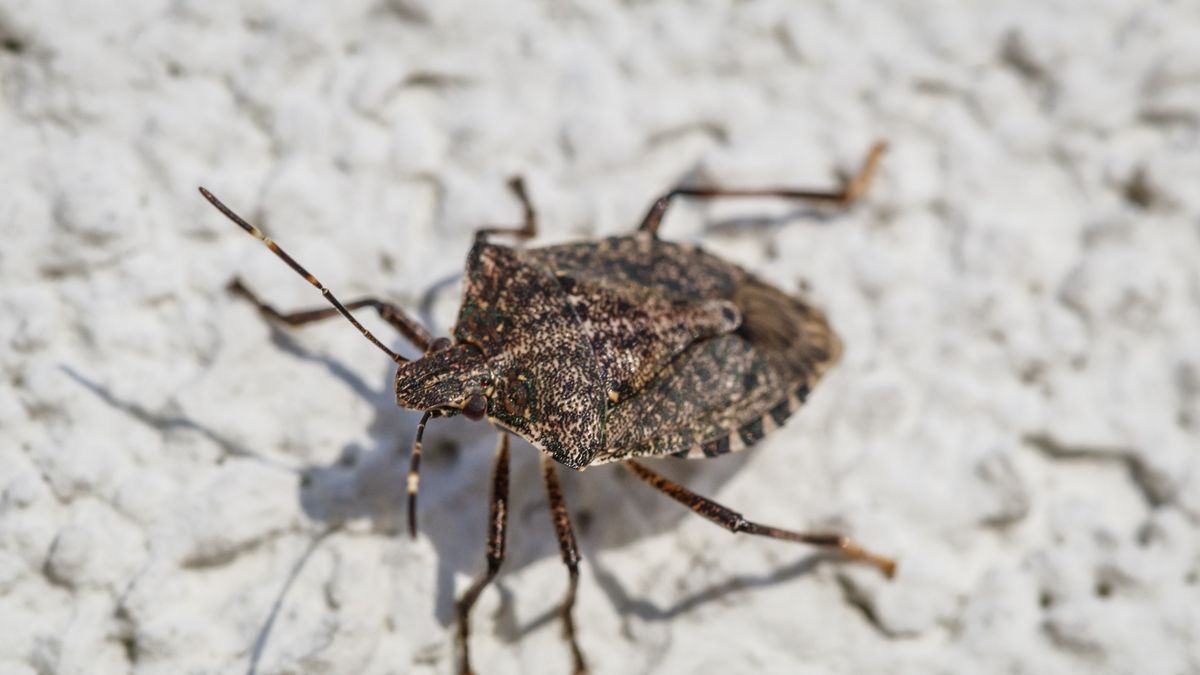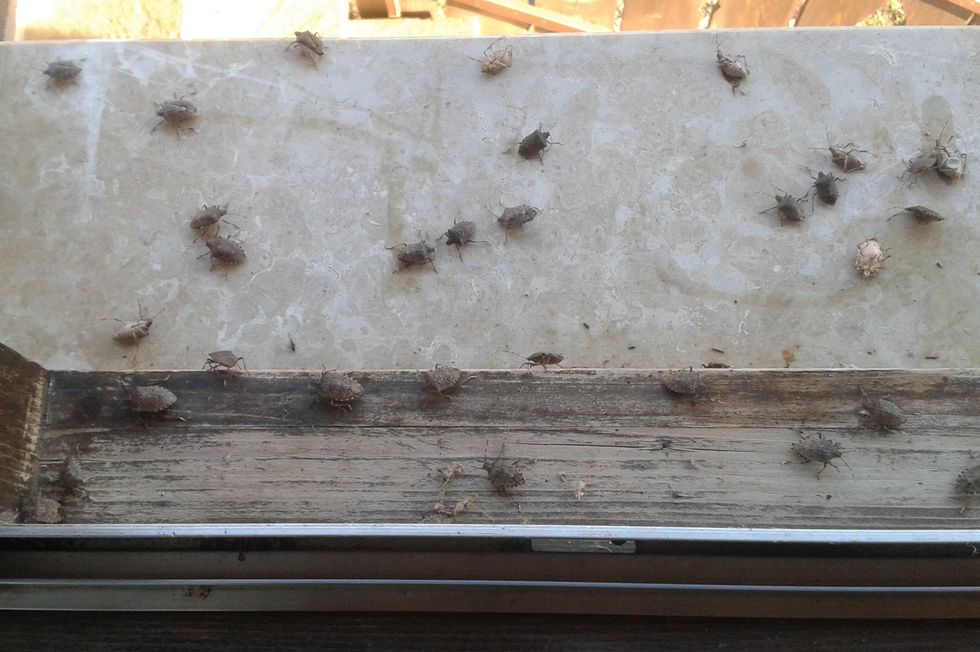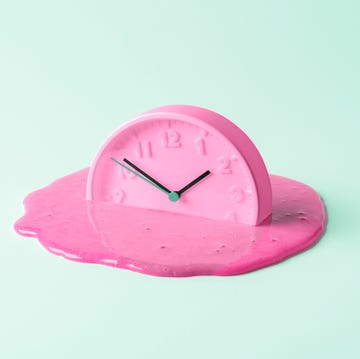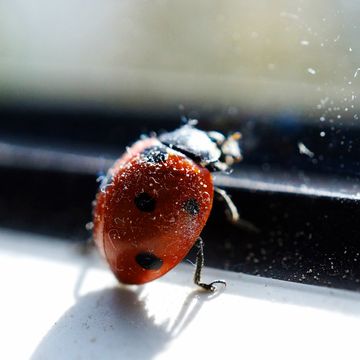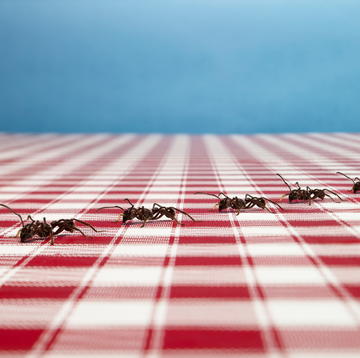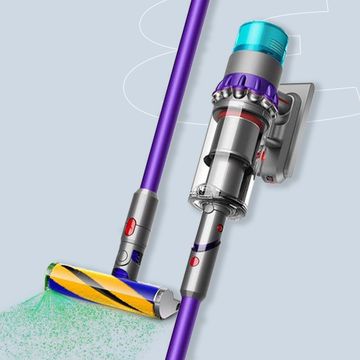There are more than 200 species of stink bugs that call North America home, but that doesn’t mean you want these critters in yours. So, what attracts stink bugs, you may ask? Figuring out what’s drawing them to your abode can go a long way in preventing the critters from popping up.
While there are many types, brown marmorated stink bugs are one of the most common in the U.S., showing up in about half of states. They’re known for their distinct shield shape and have a marbled pattern on their backs (like the one in the image above).
As for that smell? They contain glands that release a foul odor as a defensive move when they feel threatened, says Macy Ruiz, a board-certified entomologist and technical services manager for Ehrlich Pest Control. (So...not ideal when you’re trying to get them out of your house!)
Meet the experts: Macy Ruiz, a board-certified entomologist and technical services manager for Ehrlich Pest Control; Michael J. Raupp, Ph.D., professor of entomology at The University of Maryland; Judy Black, vice president of quality assurance and technical services at Orkin, LLC; and Edson McLean, pest control expert and senior merchant at The Home Depot.
But what’s attracting them to your space in the first place? Read on to find out. Plus, learn what you can do to get rid of stink bugs for good.
Why are stink bugs attracted to your house?
1. They’re seeking shelter.
As the temperatures drop, stink bugs like to come inside to seek shelter for something known as diapause, a period in their life cycle when they’re inactive, says Michael J. Raupp, Ph.D., professor of entomology at The University of Maryland and creator of Bug of the Week. “They are not seeking warmth,” he says. “If it’s warm, they are not diapausing.”
A stink bug goes into diapause because, in nature, there is no food for it to eat during that time. This period allows a stink bug’s metabolism to slow down so that it can go dormant, says Judy Black, vice president of quality assurance and technical services at Orkin, LLC.
2. A scent trail is tipping them off.
When a stink bug finds a good spot to shelter, Black says they release a pheromone that attracts other stink bugs to their location. Cue the massive stink bug party you did not approve of.
3. Your home has lots of lights.
Stink bugs are attracted to bright lights, Ruiz explains. If you tend to leave exterior lights on at night and you’re dealing with a stink bug problem, she says it’s not a bad idea to turn off your outside lights and pull your blinds before you head to bed.
4. Loose entry points are giving them easy access.
Stink bugs usually sneak inside through cracks, crevices, gaps, and holes in foundations and roofs, Ruiz says. They also come in through windows and door frames. “If there are a lot of entry points into your home, stink bugs can get in,” Ruiz says.
5. You live near a rural, green space.
Stink bugs like to congregate in agricultural fields, orchards, shrubs, trees, and large gardens because they are herbivores. So if you happen to live near one of those areas, they may simply move from their usual location to your (warmer) home.
“They prefer rural places,” Raupp says. “They’ve been feeding on corn and soybean all summer, and your home happens to be in their way.”
6. Your house is made of natural materials.
When stink bugs go into diapause in nature, they prefer to chill out under the bark of a dead tree or hang under a big, rocky crevice. So if your home is dark in color with natural siding, stink bugs might mistake it for its typical hangout spot, causing them to collect in your home, Raupp says.
How do stink bugs get in the house?
“Stink bugs can enter a home through cracks or gaps in the foundation,” explains Edson McLean, pest control expert and senior merchant at The Home Depot. “They can show up in large numbers in blinds, draperies, and light systems,” after getting into the home through various cracks and crevices nearby. McLean adds that September and October are the most common months for stink bugs to move inside since this is when the weather begins to cool and the bugs look for warmth inside homes.
How to get rid of stink bugs
There are a few things you can do to get rid of stink bugs, involving a combination of prevention and removal efforts.
First, seal up your home.
Look for cracks around vents, windows, door frames, utility boxes, and baseboards, and seal them up using caulk, foam sealant, weather stripping tape, sweeps, mesh screens, or whatever material makes sense for that particular area, Raupp says. Making sure siding and pipes are secure is helpful. If you have a fireplace, closing the flue when you’re not using it can help keep stink bugs from entering your home that way, too.
Then, scoop them up.
If you happen to spot stink bugs hanging around, using your vacuum to suck them up is the easiest (and cleanest) way to get rid of them. “The vacuum may smell like stink bugs for a period of time. Always empty the vacuum afterward,” Ruiz says.
You can also invert the top of a plastic water bottle, put soapy water inside it, scoop up the bugs, and let them fall in and drown, Raupp says. Then, feel free to return them to the environment, throw them in a sealed bag in the trash, or add them to your compost pile.
Tempted to reach for pesticide? It’s best to skip them, as there is no one area to spray the chemicals, which can be potentially harmful if you have kids or pets running around.
In general, you should be able to take care of stink bugs on your own. But if you’re dealing with a lot of them and you feel like you can’t handle the swarm solo, it’s time to call a pest management service for help.
Are stink bugs harmful?
While stink bugs won’t bite or hurt you or your pets, they can be a major nuisance if you have a home garden or grow crops. Stink bugs are herbivores, and they’ll cause damage to plants in search of food. McLean adds that the bugs don’t usually breed indoors and shouldn’t cause interior damage in the home.
How long is stink bug season?
Stink bugs are most active during early autumn—and they’re looking for a place to congregate in annoyingly large numbers (often while giving off an unusual odor). “Stink bugs have a consistent timeline they stick to when it comes to laying eggs, maturing, and hibernating,” McLean explains. “April to October is the primary time of the year for stink bugs to be out.” Their hibernation period ends in April (when they wake up after resting in homes and outdoor leaf litter), while May through September is their active mating season. From September to October stink bugs tend to look for warmth as the weather cools.
Where do stink bugs nest?
According to McLean, stink bugs do not build nests. When it comes to laying eggs, they do so outdoors, usually on the underside of leaves. “When it comes to indoor areas, they usually seek out small quiet areas to hide in larger packs,” he says.
What scents keep stink bugs away?
If you’re looking for a scent to ward off stink bugs, McLean suggests harnessing the aromas of essential oils. “While stink bugs themselves are smelly creatures, some of the scents we consider pleasant aren’t well-received by these pests,” he explains. Try using essential oils such as lemongrass and/or spearmint, which McLean says stink bugs often shy away from.
McLean also explains that planting herbs in your garden can help keep stink bugs away: “The smellier the plant, the better it is at protecting your garden.” One final tip? The scent of dryer sheets can also help repel stink bugs, so it may help to keep these around areas of your home where stink bugs might enter or dwell.
Like what you just read? You’ll love our magazine! Go here to subscribe. Don’t miss a thing by downloading Apple News here and following Prevention. Oh, and we’re on Instagram too.
